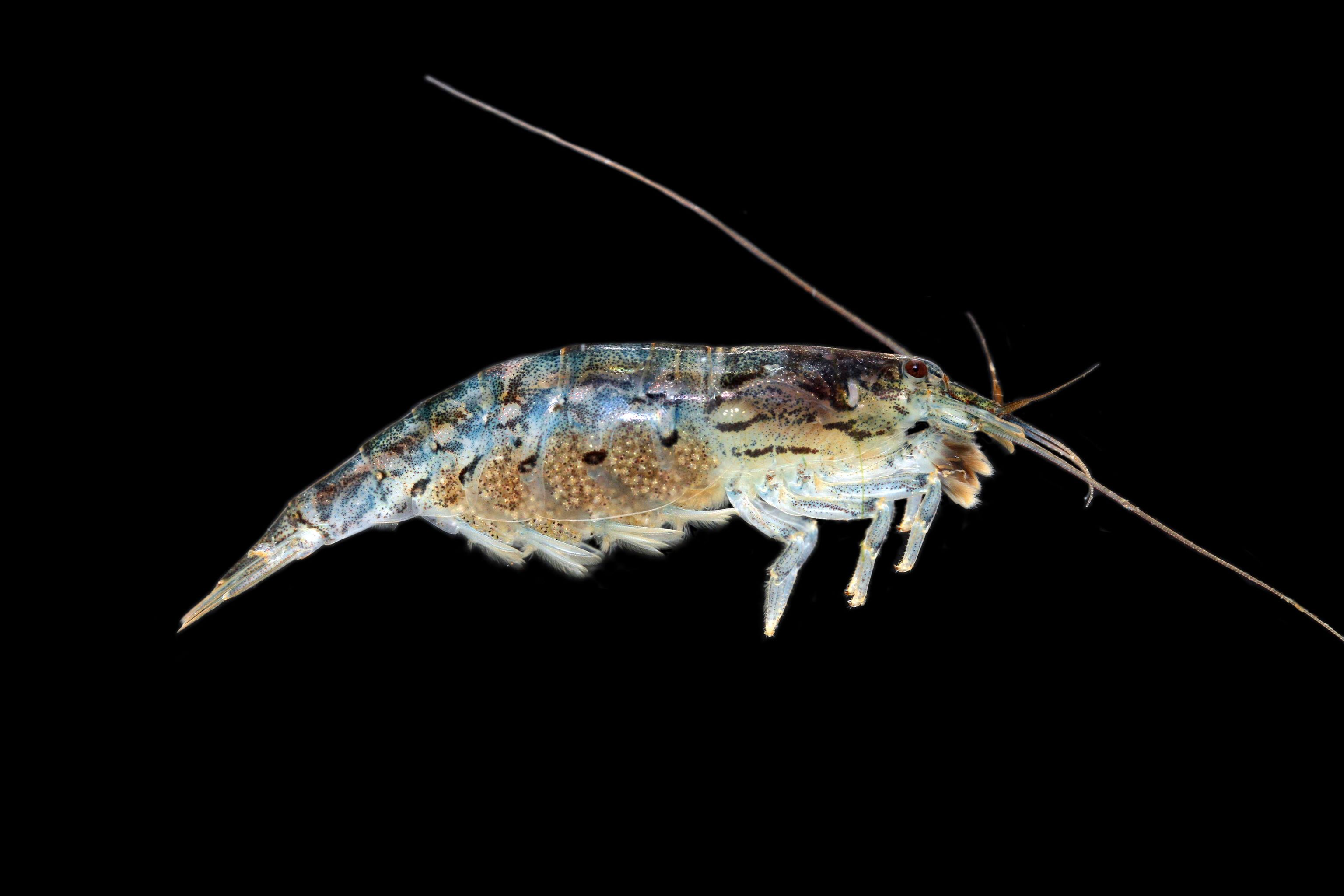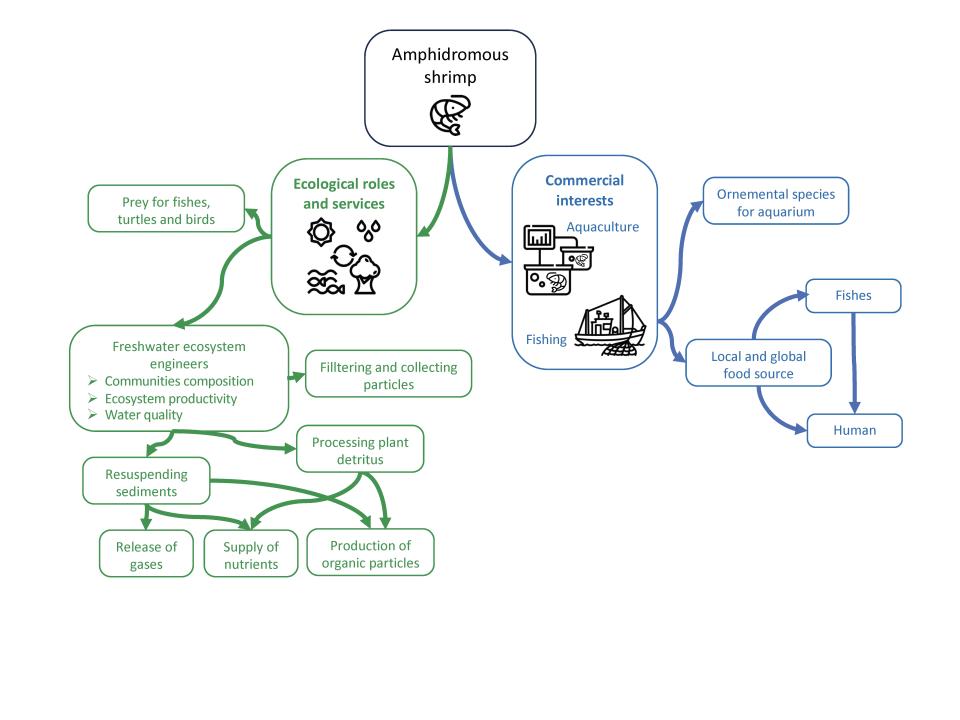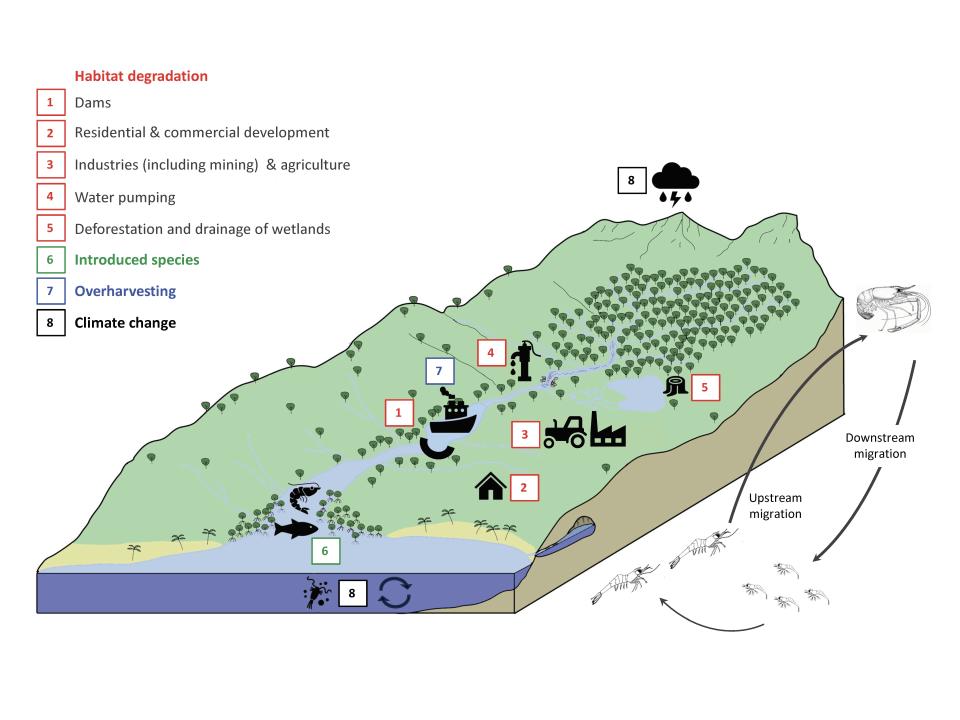de Mazancourt, V., & Ravaux, J. (2024). Amphidromous shrimps (Decapoda: Caridea): current knowledge and future research. Journal of Crustacean Biology, 44(1), 1–15. https://doi.org/10.1093/jcbiol/ruae003
The caridean shrimps comprise one of the largest groups of amphidromous species, sharing their life cycle between freshwater habitats and the ocean. Key species of tropical ecosystems, some of which are also targets for local or international markets without any regulations being implemented, make carideans particularly vulnerable to the threats facing natural populations. We present an inventory of amphidromous carideans and an overview of their habitats, the interests they arouse, because of their ecological role as well as for their commercial importance and the threats they face. We suggest directions for future research following an experimental-biology approach, that may help to assess risks and impacts on natural habitats and ultimately prioritize conservation and management projects.
Contact:
Fig.1 : Amphidromous shrimps as key species for freshwater ecosystems and human societies. © de Mazancourt & Ravaux
Fig.2 : Threats to amphidromous shrimps have been classified into four categories: habitat degradation (red), introduced species (green), overfishing (blue), and climate change (black). The life cycle of an amphidromous shrimp is shown on the right. © de Mazancourt & Ravaux
The caridean shrimps comprise one of the largest groups of amphidromous species, sharing their life cycle between freshwater habitats and the ocean. Key species of tropical ecosystems, some of which are also targets for local or international markets without any regulations being implemented, make carideans particularly vulnerable to the threats facing natural populations. We present an inventory of amphidromous carideans and an overview of their habitats, the interests they arouse, because of their ecological role as well as for their commercial importance and the threats they face. We suggest directions for future research following an experimental-biology approach, that may help to assess risks and impacts on natural habitats and ultimately prioritize conservation and management projects.
Contact:
- Valentin de Mazancourt, valentin.demazancourt_ext@mnhn.fr
- Juliette Ravaux, juliette.ravaux@sorbonne-universite.fr
Fig.1 : Amphidromous shrimps as key species for freshwater ecosystems and human societies. © de Mazancourt & Ravaux
Fig.2 : Threats to amphidromous shrimps have been classified into four categories: habitat degradation (red), introduced species (green), overfishing (blue), and climate change (black). The life cycle of an amphidromous shrimp is shown on the right. © de Mazancourt & Ravaux






